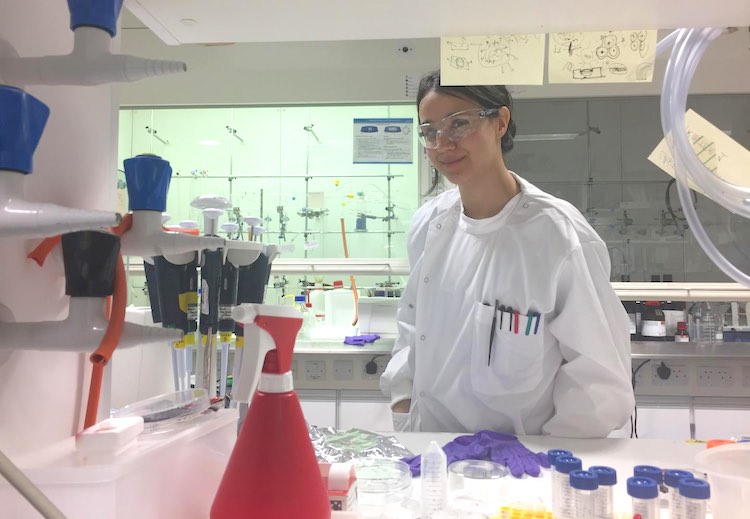A synthetic, soft tissue retina developed by a 24-year-old student could offer fresh hope to visually impaired people.
Until now, all artificial retinal research has used only rigid, hard materials. The new research, conducted by Vanessa Restrepo-Schild, a researcher at Oxford University, is the first to successfully use biological, synthetic tissues, developed in a laboratory environment.
RELATED: Breakthrough Treatment With Lab-Grown Corneas Cures Blindness in Sheep
Just as photography depends on camera pixels reacting to light, vision relies on the retina performing the same function. The retina sits at the back of the human eye, and contains protein cells that convert light into electrical signals that travel through the nervous system, triggering a response from the brain, ultimately building a picture of the scene being viewed.
Restrepo-Schild led the team in the development of a new synthetic, double layered retina which closely mimics the natural human retinal process. The retina replica consists of soft water droplets (hydrogels) and biological cell membrane proteins. Designed like a camera, the cells act as pixels, detecting and reacting to light to create a grey scale image.
The study shows that unlike existing artificial retinal implants, the cell-cultures are created from natural, biodegradable materials and do not contain foreign bodies or living entities. In this way the implant is less invasive than a mechanical devise, and is less likely to have an adverse reaction on the body. Restrepo-Schild added: “The human eye is incredibly sensitive, which is why foreign bodies like metal retinal implants can be so damaging, leading to inflammation and/or scaring. But a biological synthetic implant is soft and water based, so much more friendly to the eye environment.”
CHECK OUT: Woman’s Blindness Apparently Reversed by Stem Cell Treatment
“I have always been fascinated by the human body, and want to prove that current technology could be used to replicate the function of human tissues, without having to actually use living cells.” said the Colombian native.
Although at present the synthetic retina has only been tested in laboratory conditions, Restrepo-Schild is keen to build on her initial work and explore potential uses with living tissues. This next step is vital in demonstrating how the material performs as a bionic implant.
Restrepo-Schild has filed a patent for the technology and the next phase of the work will see the Oxford team expand the replica’s function to include recognizing different colors. Looking further ahead the research will expand to include animal testing and then a series of clinical trials in humans.
Click To Share The Revolutionary News With Your Friends




















